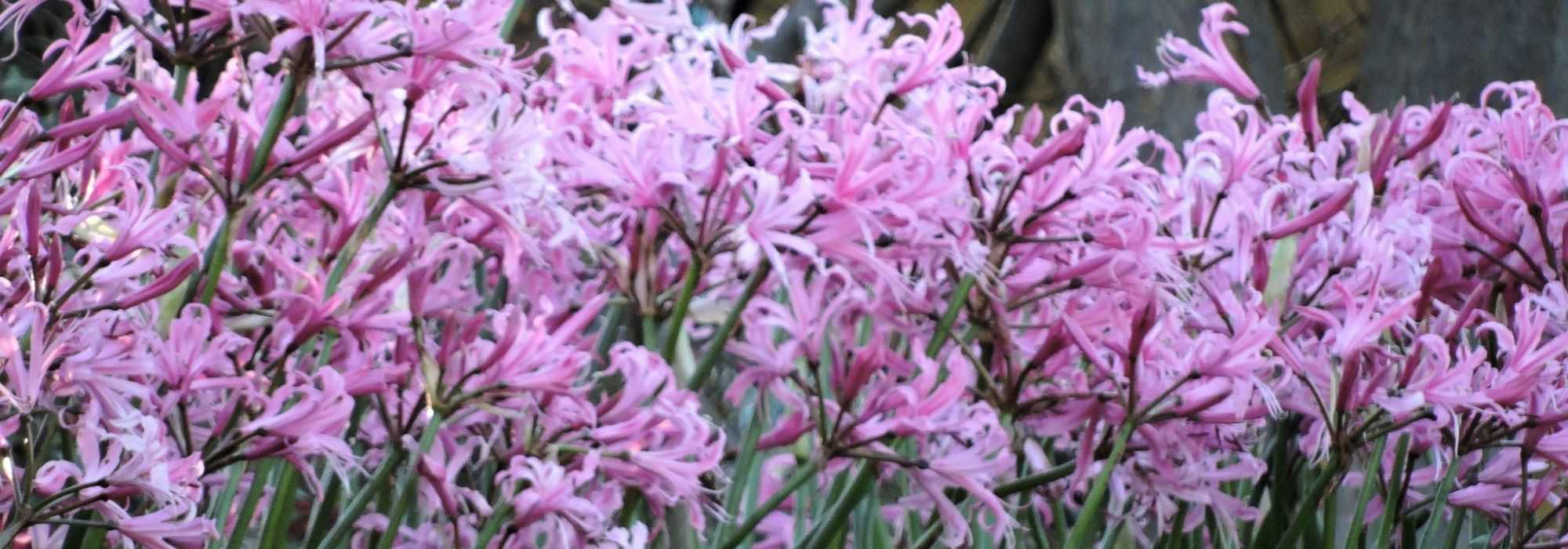
Nerine: planting, growing and care
Contents
Nerine, in a nutshell
- Nerine is a spectacular South African bulbous plant that flowers out of season in autumn in shades of pink, red or white.
- Ribbon-like foliage often appears after flowering in deciduous species such as Nerine bowdenii.
- With relatively low hardiness (-5 to -10°C), Nerine prefers warm, sunny positions, light, well-drained soils and dislikes being moved.
- Planting in pots is recommended in cold climates.
A word from our expert
Nerines are commonly called ‘Guernsey lily’. This name is linked to their accidental establishment on Guernsey following the wreck of a Dutch ship carrying bulbs of Nerine sarniensis. Nerine bulbs are grown for the beauty and quality of their delicately sculpted flowers, which are used both to adorn the garden and as cut flowers.
Nerines somewhat resemble agapanthus flowers with their sturdy stems that bear at their summit a large umbel of slender trumpet-shaped flowers. The waxy petals, more or less ribbon-like and twisted, display pearly pink tones in Nerine bodwenii, the hardiest species, but there are white forms such as Nerine flexuosa ‘Alba’ and vivid red in Nerine sarniensis. When planted en masse along a path, the effect of this flowering borne on neat vertical stems is truly spectacular, especially in autumn when bulb flowers are rather scarce.
The flowering of Nerines occurs in spring in their native country. It is preceded by a dormancy period during the winter, quite dry in western Africa, which for us corresponds to summer. However, the evergreen species from eastern South Africa such as Nerine undulata retain their strap-like foliage and do not really have a dormancy period given the steady climate and consistently positive temperatures of that subtropical region.
Nerines are easy-to-grow plants in mild Mediterranean climates or where oceanic influence prevails. You can also grow them in pots to protect them from severe frosts. Most tolerate temperatures between -3 and -5°C, except Nerine bodwenii, the most common, which tolerates between -10°C and -12°C in well-drained soil. Most require a dry summer to observe their dormancy. Plant them in a sunny spot sheltered from cold winds.
Description and botany
Botanical data
- Latin name Nerine
- Family Amaryllidaceae
- Common name Nerine, Guernsey lily
- Flowering from September to January
- Height between 0.30 and 0.60 m
- Exposure sun or partial shade
- Soil type any loose, well-drained soil, even calcareous
- Hardiness Medium (-5 to -12 °C)
Genus Nerine includes about 25 species of herbaceous perennials with large bulbs, closely related to Amaryllis belladonna and even to Agapanthus, all belonging to same family Amaryllidaceae. These bulbous plants originate mainly from South Africa, whereas Hippeastrum (indoor amaryllis) is American in origin. The Amarine resulted from a cross-breeding between a Nerine and an Amaryllis carried out in the 1950s. This hybrid produces umbels about 8 cm across, with large true-pink starry flowers whose petals are less narrow than those of Nerine and show attractive undulations that catch the light.
As with onion, bulb 3 to 5 cm in diameter is formed of stacked tunics whose base, called short stem of bulb, produces fleshy roots. A thin tunic wraps the bulb which continues into a neck. Their strap-like foliage light green glossy exceeding 20 cm long and 2–3 cm wide may be deciduous or evergreen and forms an erect, open clump. Evergreen species occupy moist subtropical regions of eastern South Africa — east of Cape, Natal and Transvaal. Among deciduous species are the hardiest bulbs such as Nerine bowdenii, able to withstand frosts around -10 to -12 °C. Native to west of Cape Province, these bulbous plants enter dormancy during the dry winter, which corresponds to our summer, before flowering in their spring, that is in autumn here. Leaves of deciduous species appear during or just after flowering. In mild climates they are almost evergreen, with short rest periods at end of winter and start of summer.
Flowers, slightly scented, appear at top of robust, rigid cylindrical stems measuring between 45 and 70 cm tall, in umbels 6 to 7 cm in diameter. The 7 to 15 lily-like flowers about 8 cm wide, borne on a long peduncle, have 6 narrow, recurved, twisted tepals as in Nerine flexuosa and undulata, which earned them the common name spider lily. In Nerine bowdenii, tepal arrangement follows bilateral symmetry (flowers are said to be zygomorphic): flower centre bears six long stamens and a pistil from which tepals radiate over a half-disc. Other species have a more regular flower (axial symmetry). In most nerines, corolla and stamens display a lovely pink colouring with a shimmering enhancement on each tepal in the form of a stronger pink midline. An exceptional vermilion-red iridescent with gold appears in Nerine sarniensis var. corusca, a pure white in Nerine flexuosa ‘Blanche’ with delicately cut petals, and white sometimes flushed with pink in Nerine bowdenii ‘Alba’.
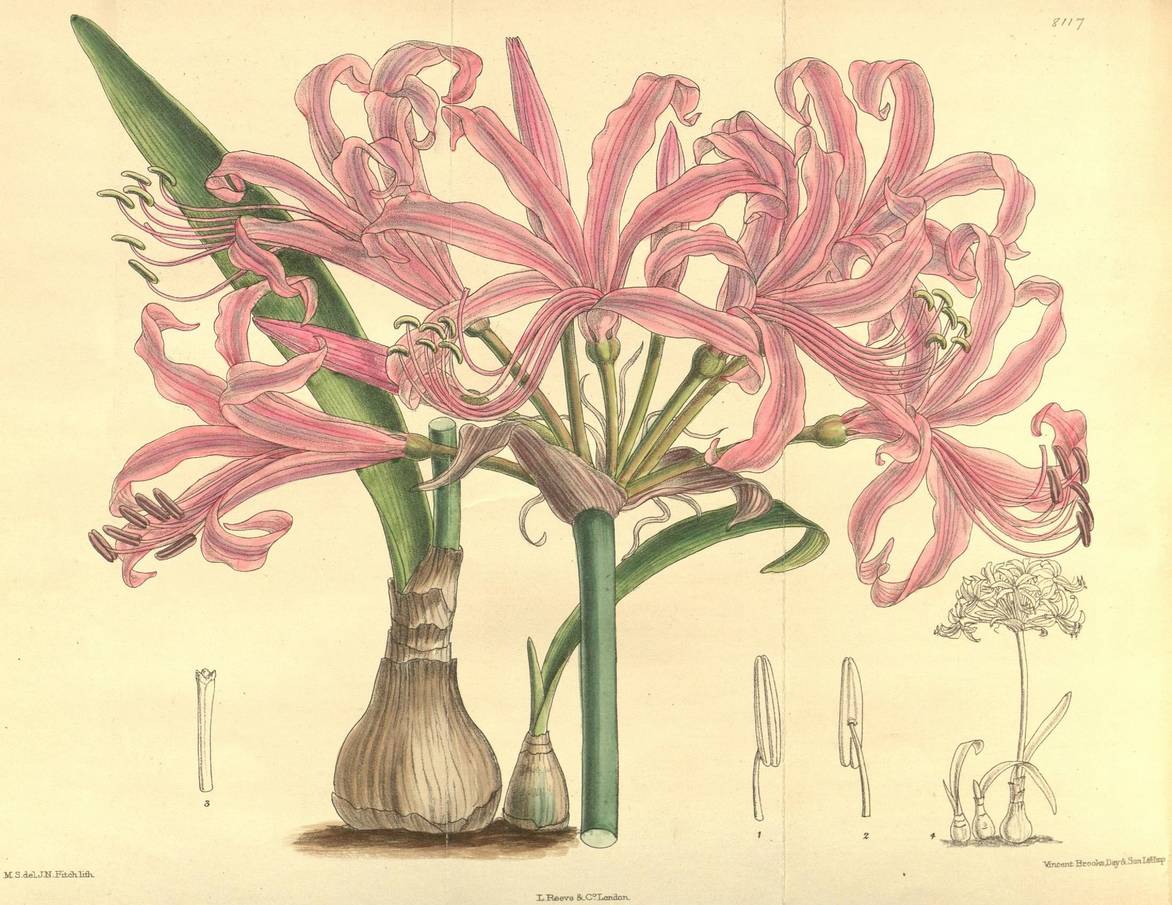
Nerine bowdenii – botanical illustration
Nerine bowdenii, the most widely traded species, is particularly floriferous and can produce around ten flower stems and spread to 30 cm in diameter. However mass planting of nerine bulbs is recommended to ensure a spectacular display between September and November lasting about three weeks. Expect plant not to flower every year, especially if bulb has been disturbed.
Fruits are capsules that eject seeds at ripeness.
Beware that all parts of Nerine are toxic, causing digestive disorders of varying severity if ingested. Some people show skin sensitivity on contact.
Genus name refers to Nereids of Poseidon or more specifically to Nereis, a half-woman half-fish nymph who helped shipwrecked sailors, a reference to wreck of a Dutch vessel off the Channel Islands of Guernsey and Jersey. This mishap in the 17th century explains establishment of bulbs brought from South Africa that took root on their coasts. Species name sarniensis denotes these islands in Latin. Species name bowdenii honours A. H. Cornish-Bowden, British botanist born in South Africa who introduced this species into England in 1899.
Read also
5 Nerines to discoverMain Nerine varieties
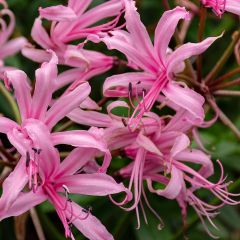
Nerine bowdenii
- Flowering time October to December
- Height at maturity 50 cm
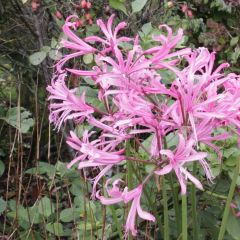
Nerine bowdenii Pink Triumph
- Flowering time November, December
- Height at maturity 50 cm
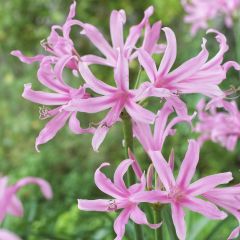
Amarine belladiva Aphrodite - Hybrid Nerine
- Flowering time October, November
- Height at maturity 70 cm
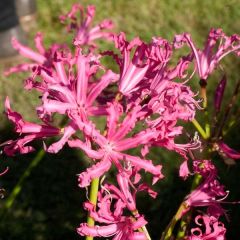
Nerine bowdenii Isobel
- Flowering time October to December
- Height at maturity 50 cm
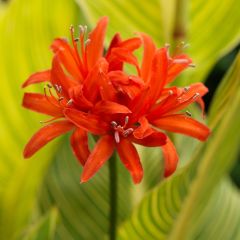
Nerine sarniensis var. corusca
- Flowering time November, December
- Height at maturity 50 cm
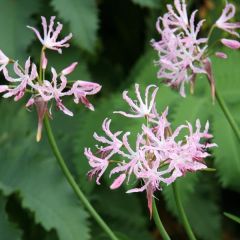
Nerine undulata
- Flowering time November, December
- Height at maturity 45 cm
Discover other Nerine
View all →Available in 0 sizes
Available in 1 sizes
Available in 1 sizes
Available in 1 sizes
Available in 1 sizes
Available in 1 sizes
Available in 1 sizes
Available in 1 sizes
Available in 1 sizes
Available in 1 sizes
Planting
Where to plant Nerine?
You can to grow Nerines in open ground in regions with mild climate such as Mediterranean and Atlantic coasts. The hardiest, such as bodwenii and Amarina hybrids, tolerate frosts down to -12 °C. Proximity to salt spray does not bother them as they grow perfectly on the coast. Choose a sunny spot sheltered from northerly winds. Avoid overwatering during summer when bulb must remain dry.
Foliage that appears after flowering needs to replenish bulb’s reserves before dormancy. It may persist to a greater or lesser extent through winter depending on climate, exposure and variety.
When to plant?
Planting Guernsey lily is usually done in spring, after frosts and until summer, which corresponds to bulb’s true dormancy period, i.e. between March and August. Bulbs must not have been kept on shelves for too long. Check they are firm and hydrated.
How to plant?
This plant is easy to grow. Continuous flowering between September and December can be achieved by combining several Nerine species or cultivars. Enjoy choosing several types of bulbs. Select bulbs larger than 10 cm to obtain flowering quickly.
- Work soil to 40 cm depth, removing weeds thoroughly.
- Lighten clay soils with sand or well-rotted compost before setting bulb on a bed of sand.
- If soil is sandy and poor, add well-matured compost or organic ‘Special bulbs’ fertiliser to ensure a feeding richer in phosphate than in nitrogen.
- Dig each planting position spacing bulbs 15 cm apart (30 cm for Amarina) to achieve a good massing effect.
- Ensure bulb tops are level with soil surface.
In a pot, prefer a porous container such as terracotta and check size of drainage holes in base to ensure good drainage.
- Pour a layer of gravel or pottery shards covering at least 1/4 of container height.
- Use a light, free-draining potting mix made of equal parts geranium compost, coarse sand (or perlite) and well-rotted compost, or a ‘special bulbs’ potting mix.
- Place bulbs 5-6 cm apart to encourage flowering.
- You can cover them with 2-3 cm of soil.
- Water but do not let water stagnate in the saucer.
→ Learn more with our care sheet : How to grow Nerines in a pot?
Flowering does not always occur in first year if bulb size is insufficient!
Read also
Colchicum: growing, planting and careCare
- Avoid watering during bulb dormancy in summer. Autumn rains will generally meet water needs during flowering. Simply ensure foliage is sufficiently watered over winter so it can replenish bulb reserves. No need to fertilise soil which could favour foliage at the expense of flowers.
- In pots, keep substrate cool during flowering then increase watering as soon as foliage appears.
- Cut flower stems at the end of whole umbel flowering, leaving foliage which should persist until the end of winter.
- Keep soil dry during summer to produce maximum flowers in autumn.
Nerines benefit from staying in place for 5 to 6 years to provide a generous flowering. Consider covering soil with a thick mulch of dead leaves in case of severe frosts. The longer foliage persists through winter, the more abundant flowering is likely to be, so planting in a mild climate is recommended.
- Do not disturb bulbs while flowering remains strong. In pots, wait until roots have colonised entire pot or flowering becomes less abundant before dividing bulbs.
Nerines are rarely affected by disease. Watch for damage from slugs and other gastropods when foliage appears.
Propagation
Simplest method of propagation is to separate the bulbils, the small bulbs surrounding the main bulb. Carry out in spring or during summer dormancy. Sowing is also possible but patience required!
Separation of bulbils
- Gently uncover bulb by digging soil around it.
- Detach bulbils attached to mother bulb by pulling on them.
- Replant them in pot barely covered, then water sparingly.
Sowing
- Sow fresh seeds collected from capsules that are opening.
- Fill large pot with light, sterile seed compost.
- Sow without covering seeds.
- Place saucer underneath and fill with water to water by capillary action.
- Keep at 12–15 °C.
- Keep seedlings protected from frost until bulb is large enough.
It can sometimes take 6 years to see first flowers!
You can raise them for a few years in a container without disturbing them much until they reach a calibre (circumference) of about 10 cm, i.e. 3 cm diameter.
Uses and companion plants
Nerines in open ground pair perfectly with seasonal perennials such as Asters in mauve, white or purple, Sedum spectabile, Japanese Anemones … Flowering stems bare of foliage at flowering time can be set off by the purple leaves of a Phormium Dark Delight or a Cordyline within a contemporary town garden. Nerines can just as well occupy sunny rockeries as beds, paired with the pink haze of Muhlenbergia capillaris, the purple spikes of Pennisetum alopecuroides Black Beauty or other grasses or even form magnificent borders on their own, which will surprise visitors. Consider sowing annuals to compensate for lack of summer growth, such as love-in-a-mist, cosmos or larkspurs.
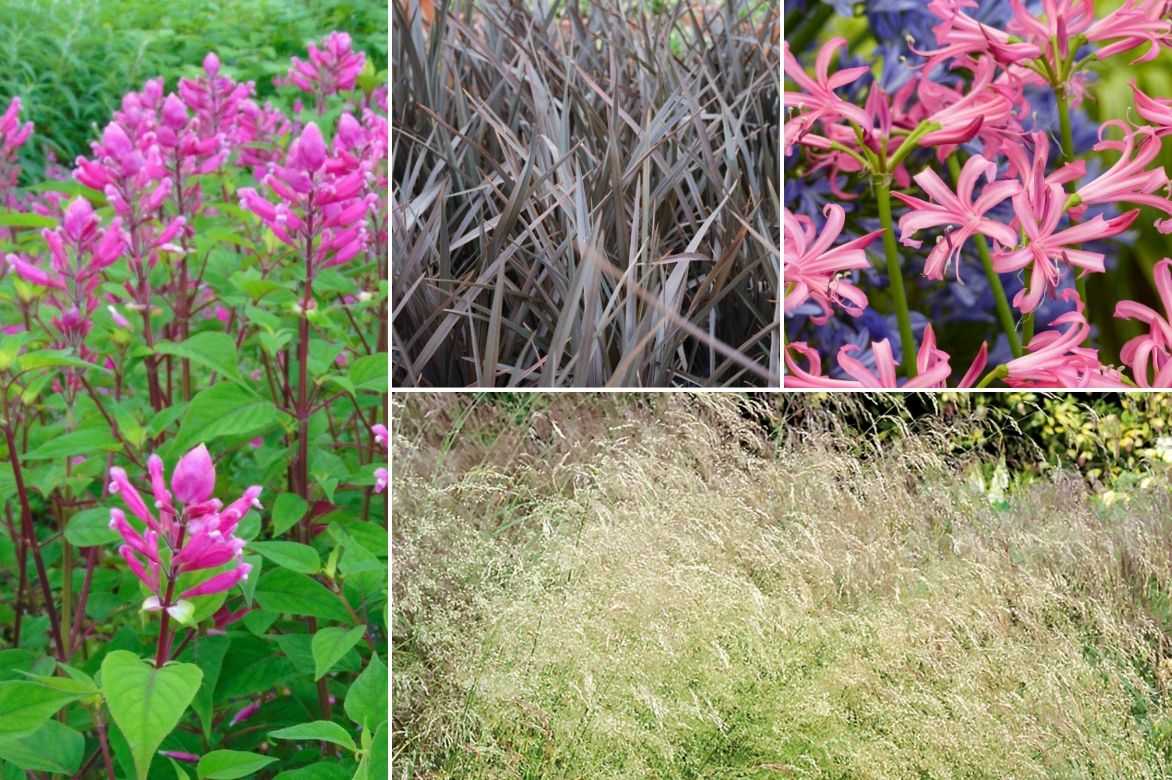
An idea for an association in mild climate: Salvia involucrata ‘Bethelii’, Dechampsia cespitosa ‘Bronzeschleier’ (©Horticolor), Nerine bowdenii and, if space allows, feel free to add a purple touch such as Phormium ‘Dark Delight’
Planted in terracotta pots, they will form focal point on a terrace in autumn, framed by palms in an exotic or contemporary style.

Another idea for vibrant colours: Nerine sarniensis in bright red (or Nerine sarniensis var corusca for a more orangey tone), Gladiolus primulinus ‘Atom’, Phormium (Phormium ‘Dark Delight’ would be perfect here too), Oxalis triangularis… you can also add a few cannas to enhance the exotic feel
Don’t forget to cut a few stems to enjoy their striking presence for about three weeks indoors, in a vase or in an Ikebana-style arrangement.
→ Discover more ideas with our article Nerines, 5 ideas for pairing
Did you know?
Guernsey celebrates Nerine in October, offering a display of the flowering of numerous hybrids in astonishing colours.
Further reading
Discover our range of Nerines: more than 10 varieties for your garden
Our care guide: 5 Nerines to discover
Our care guide: Nerines: 5 ideas for combining them
Our care guide: How to grow Nerines in a pot?
Frequently asked questions
-
Why isn't my potted Nerine flowering?
Guernsey lily bulb takes 2 to 3 years to establish before it begins to flower. Planting or transplanting therefore requires some patience. Afterwards, the bulb needs to be slightly cramped in its pot, even to endure poor soil and two months of drought before it flowers to initiate flowering.
- Subscribe!
- Contents
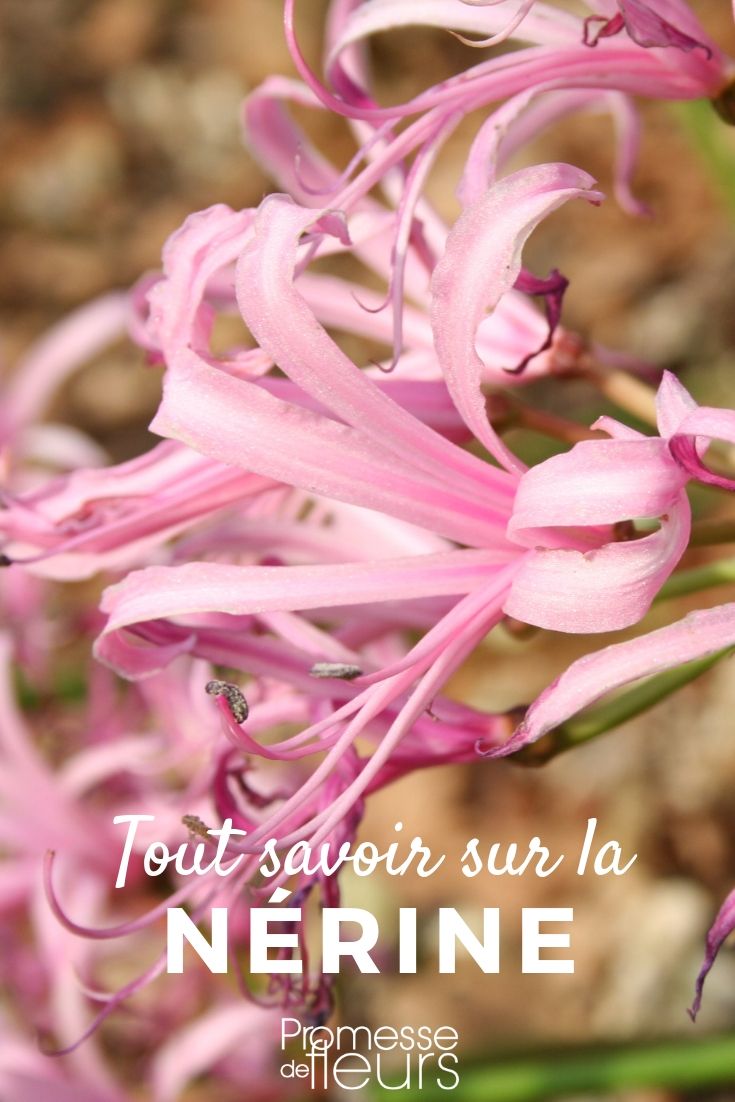































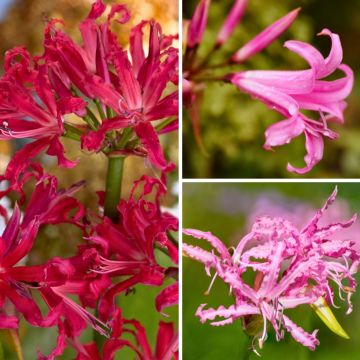
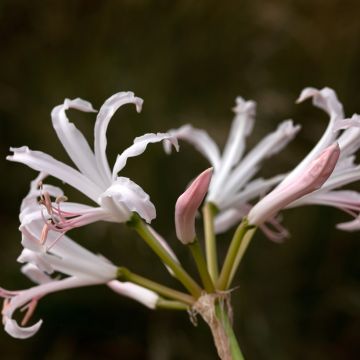
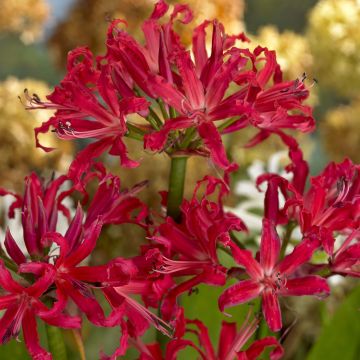
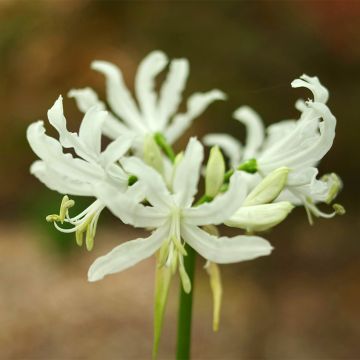


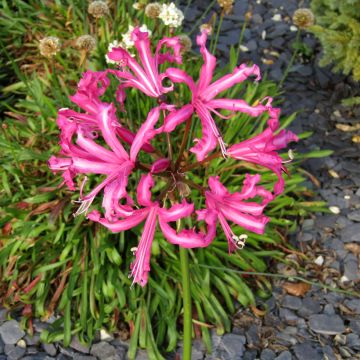
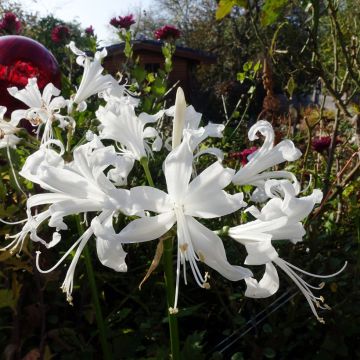
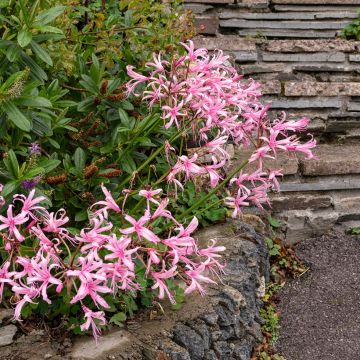
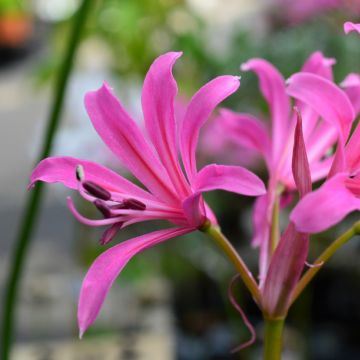
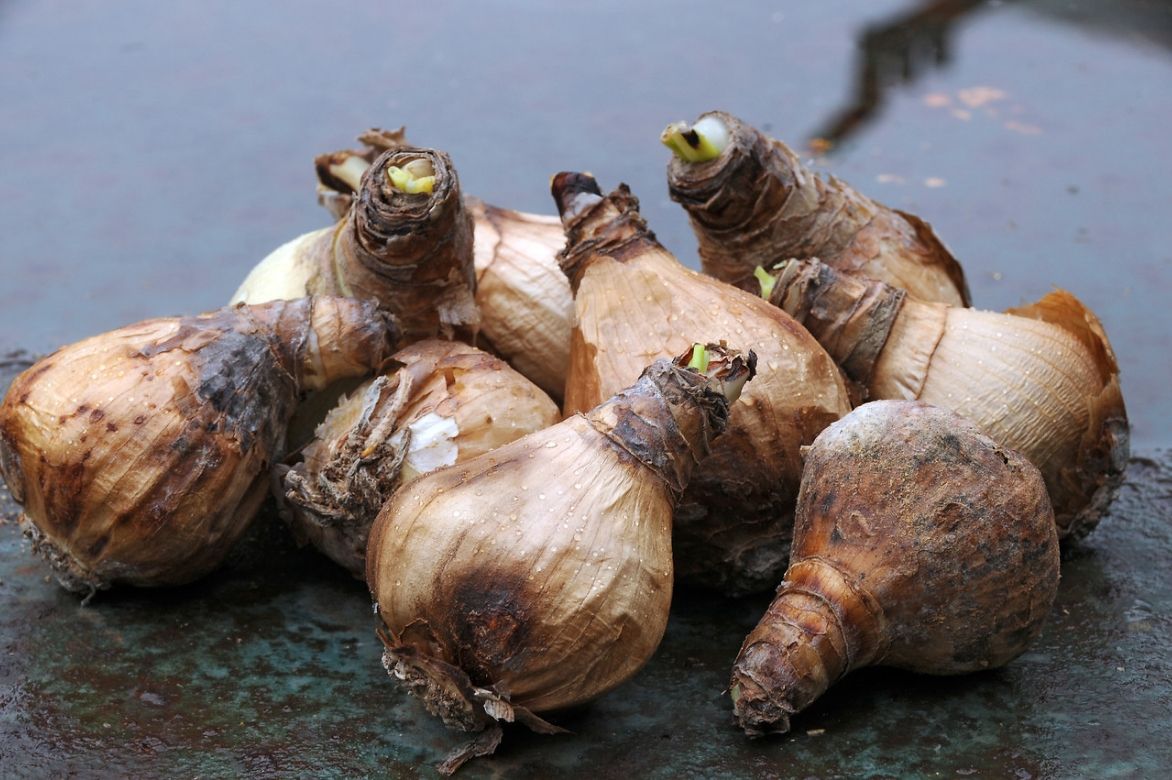
Comments